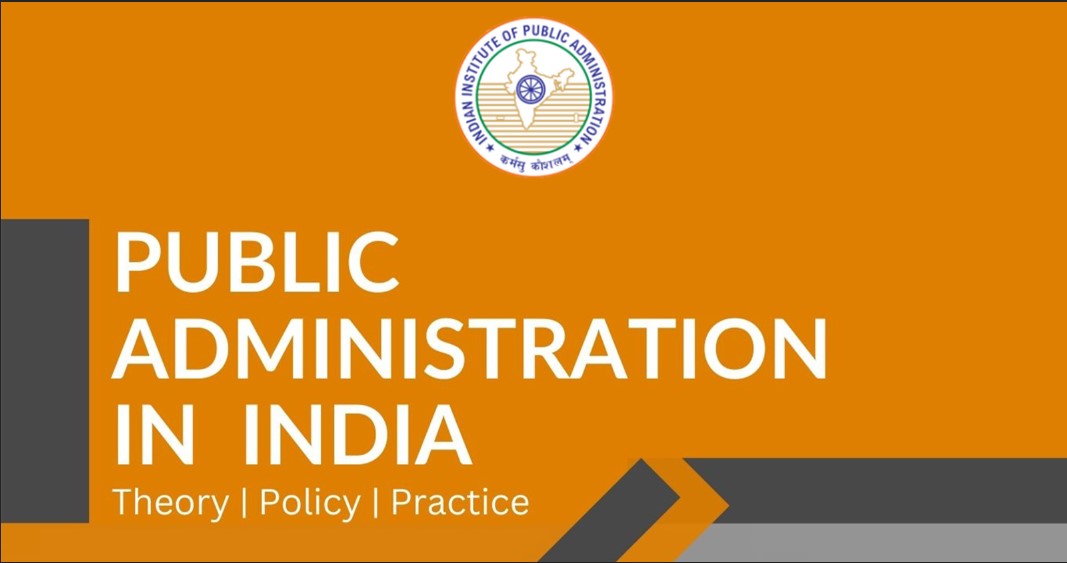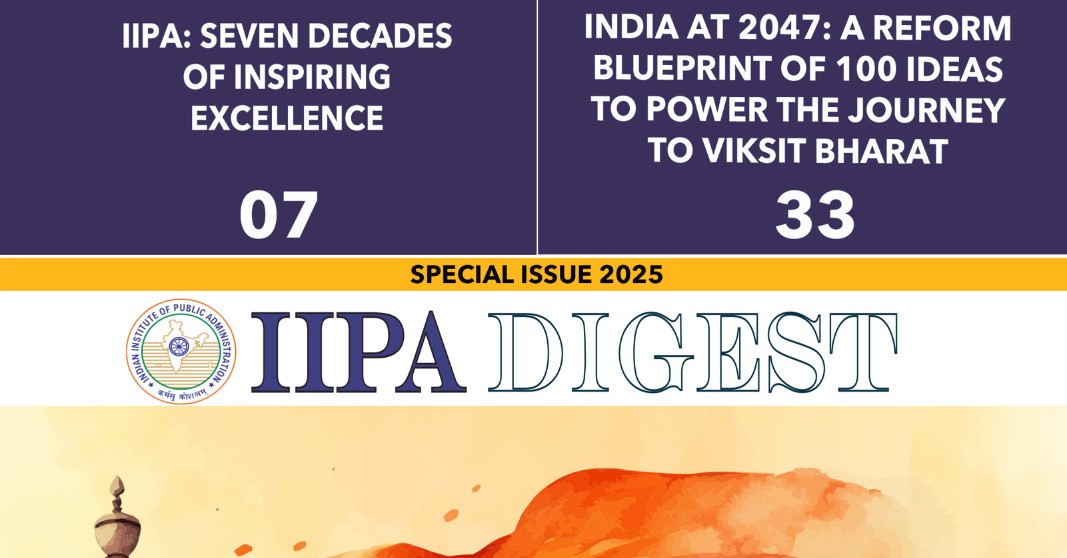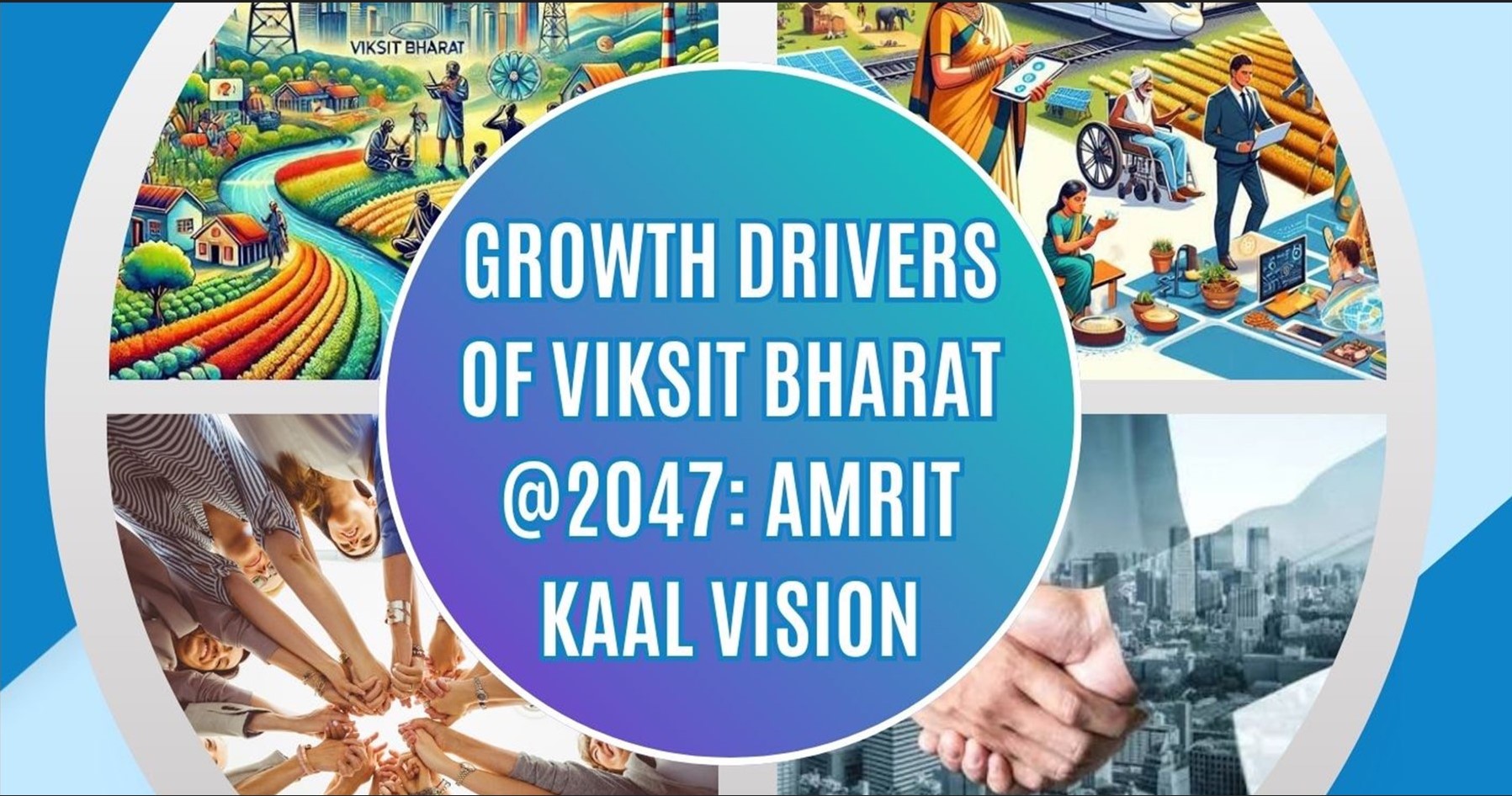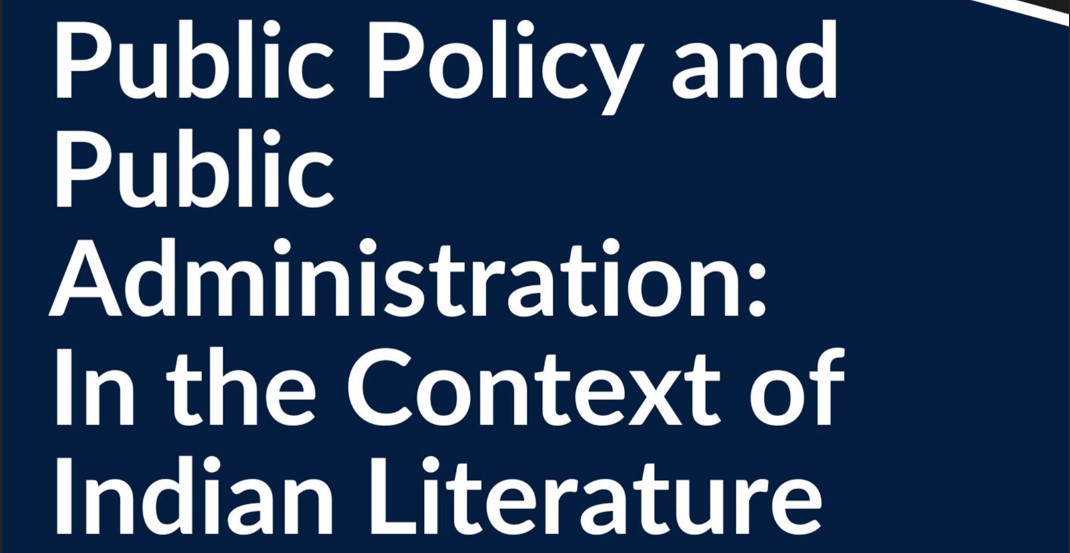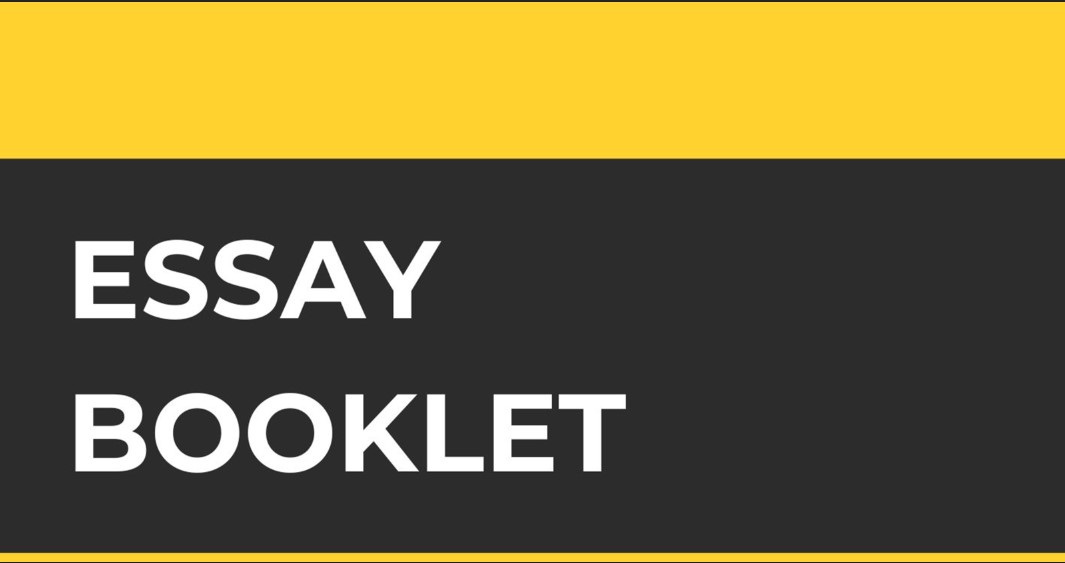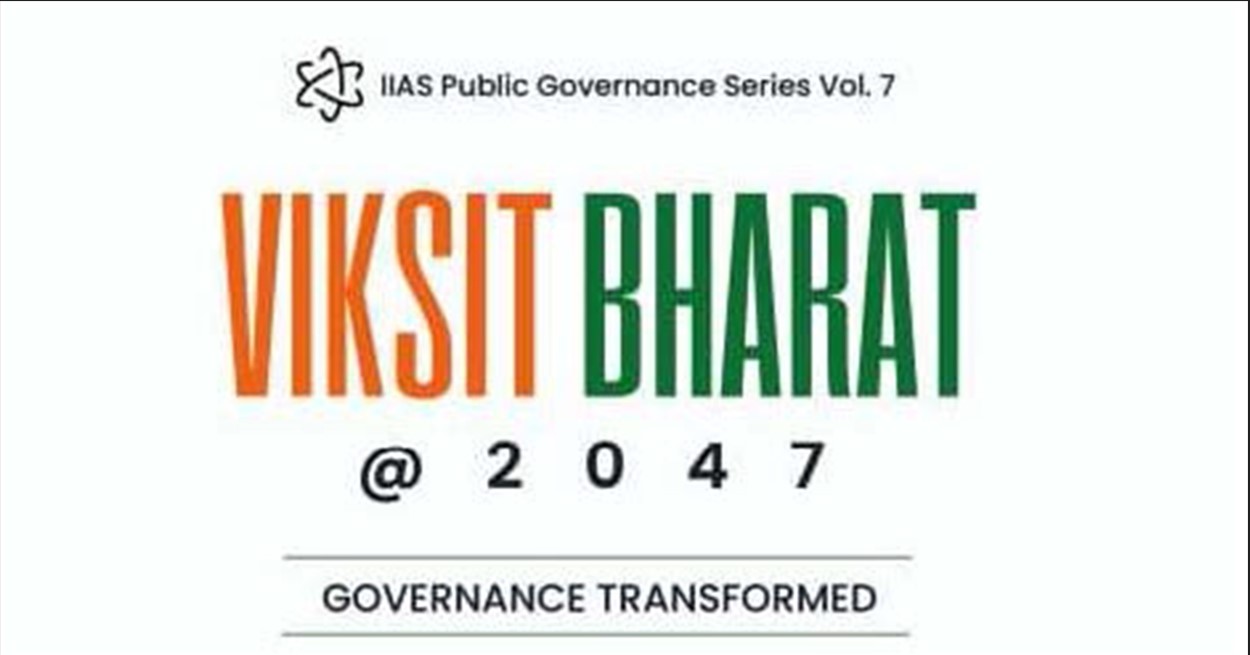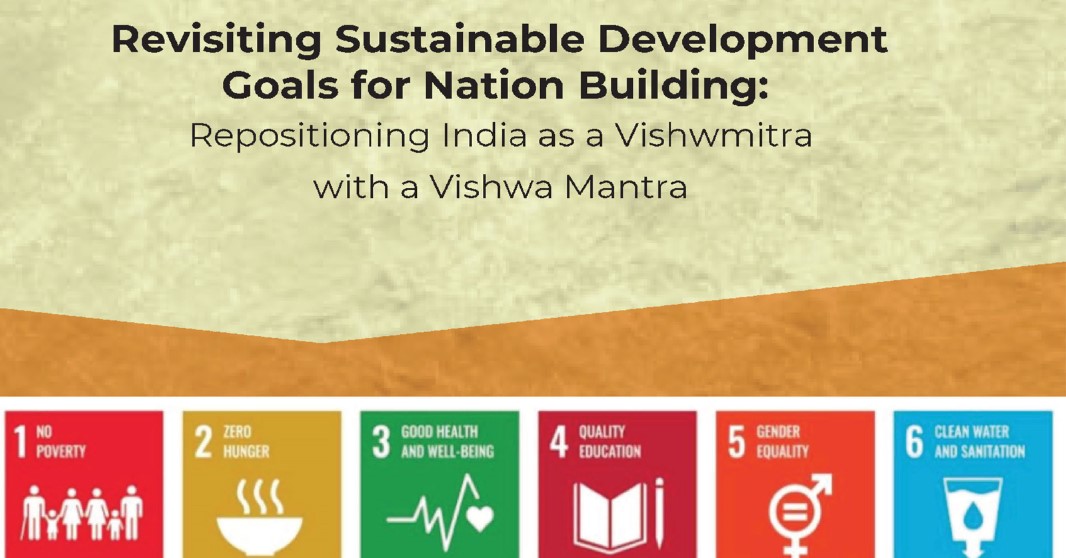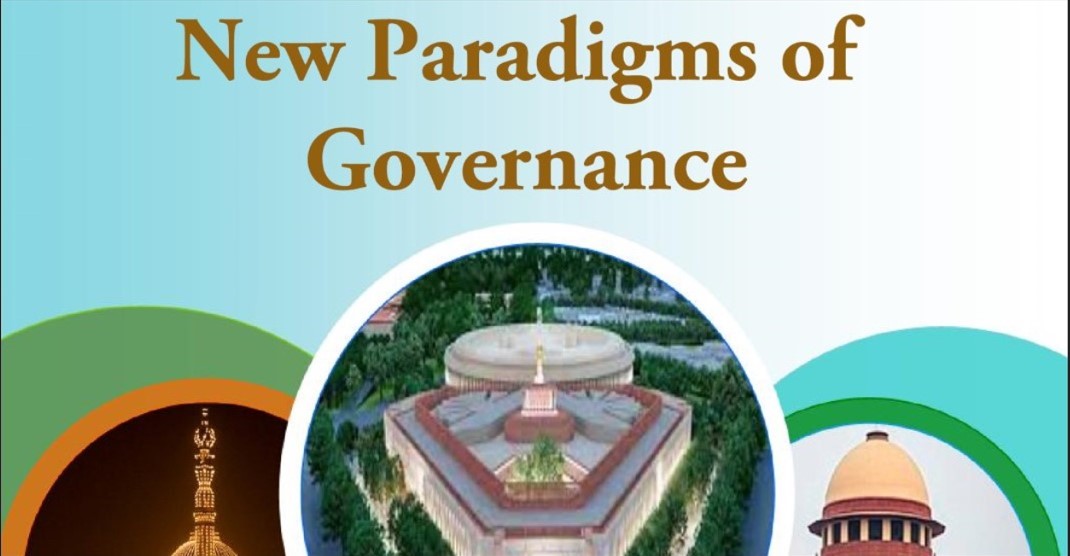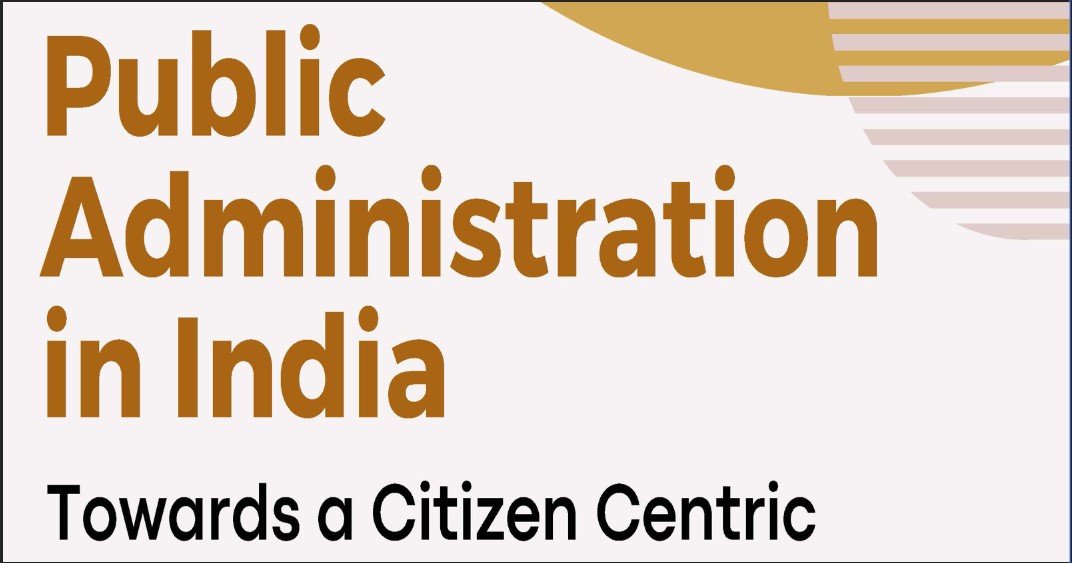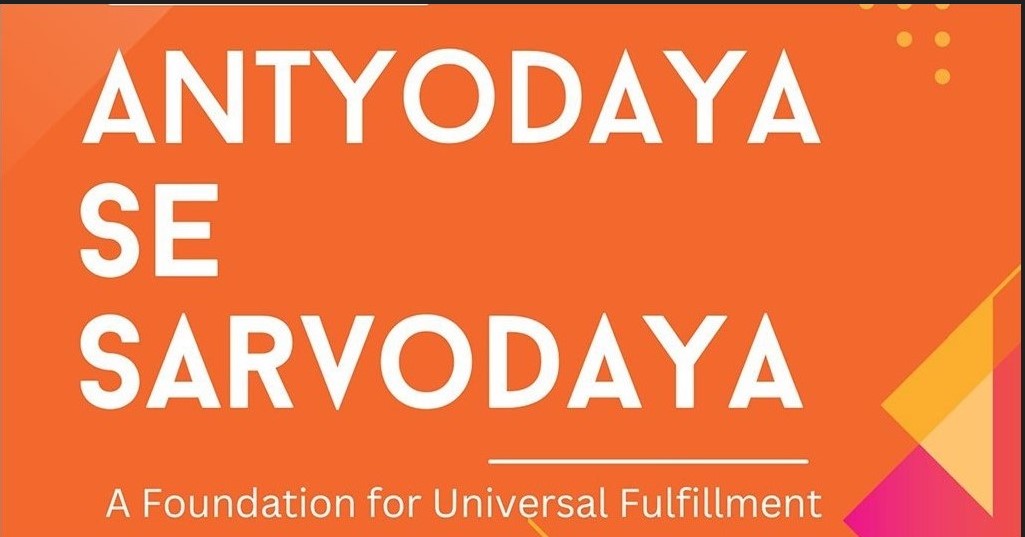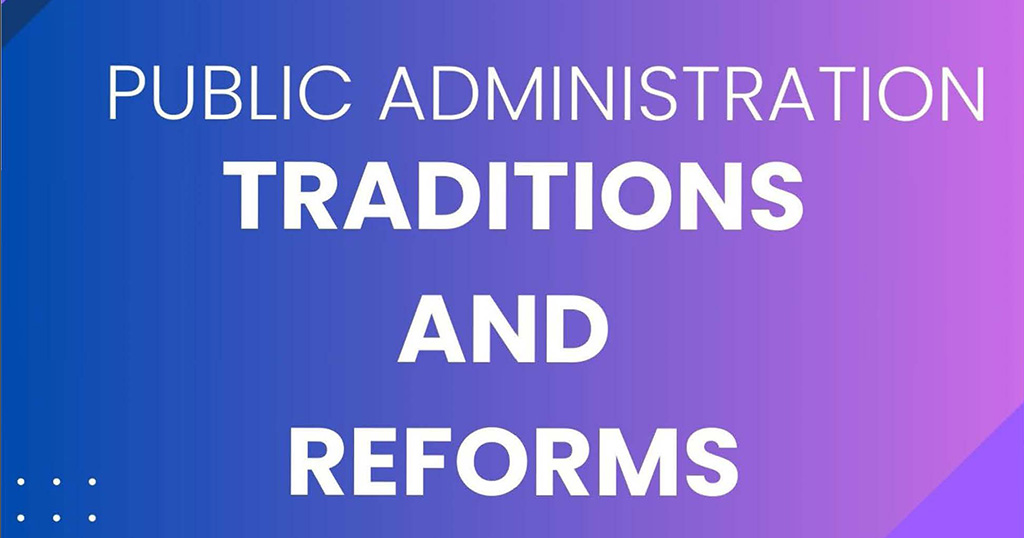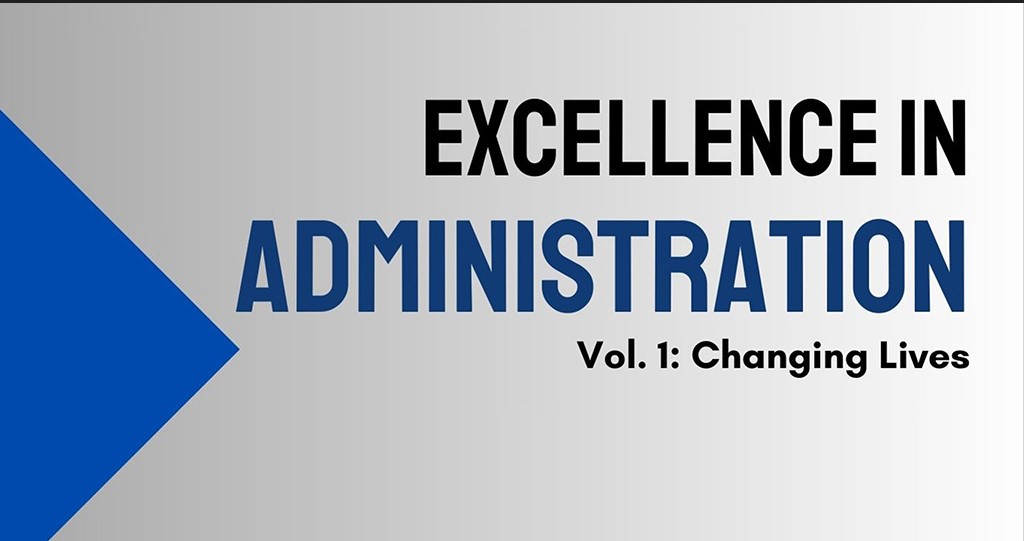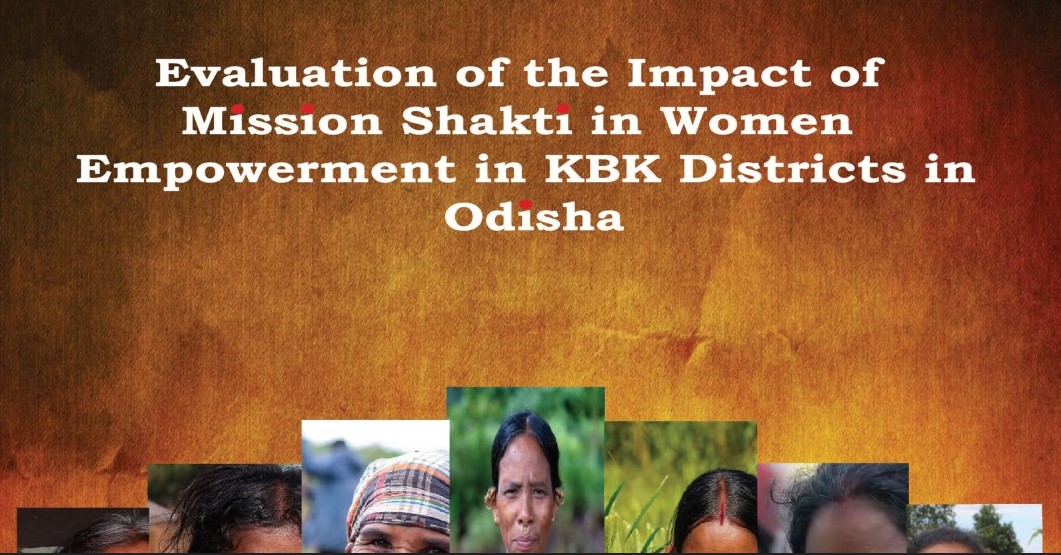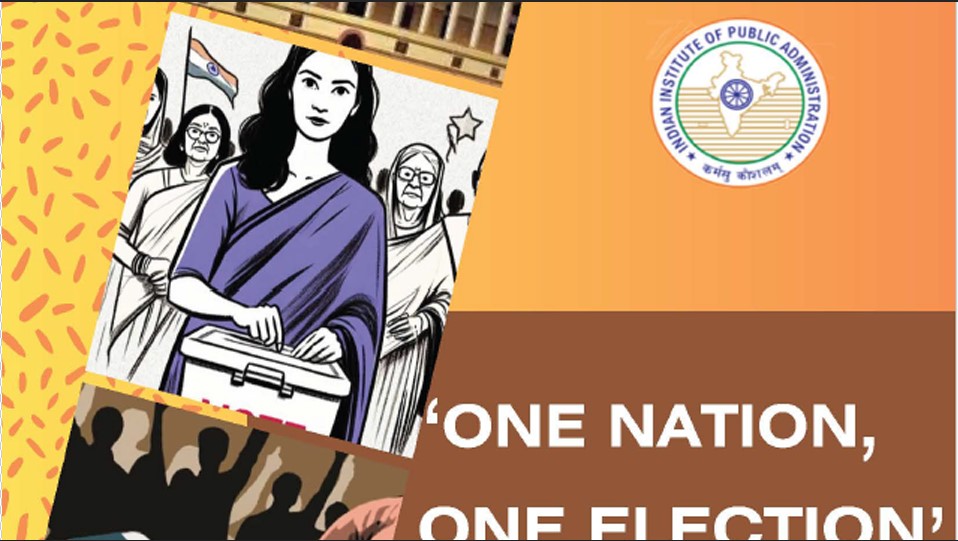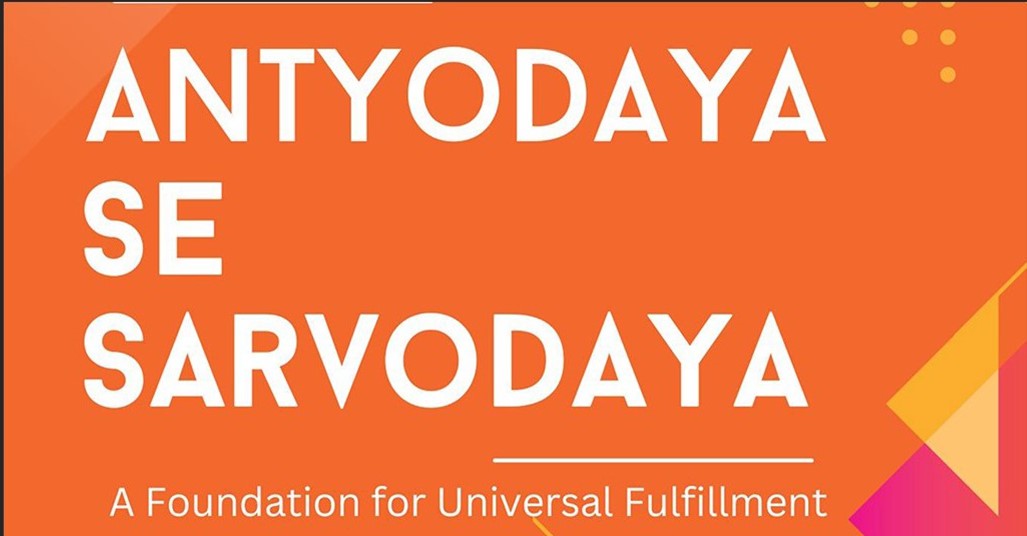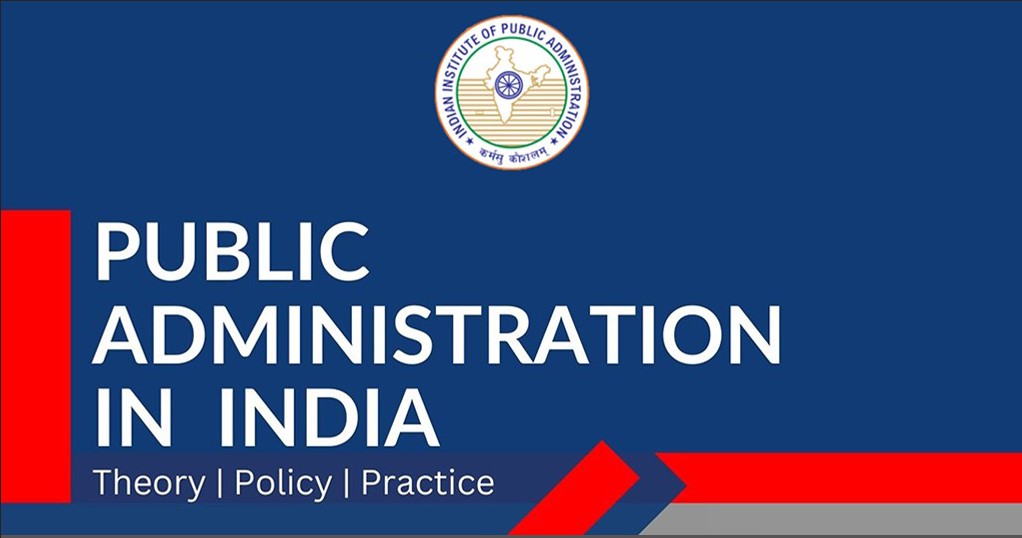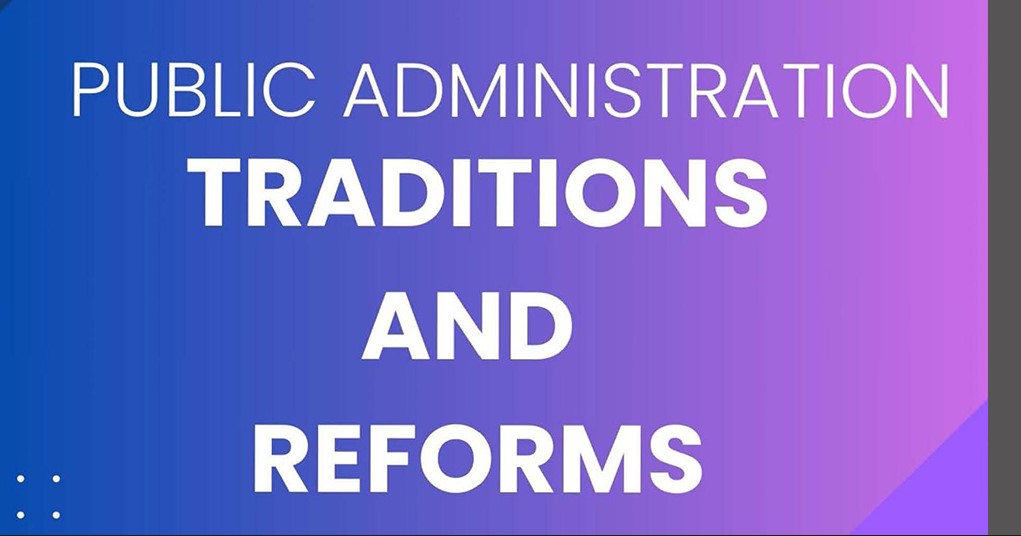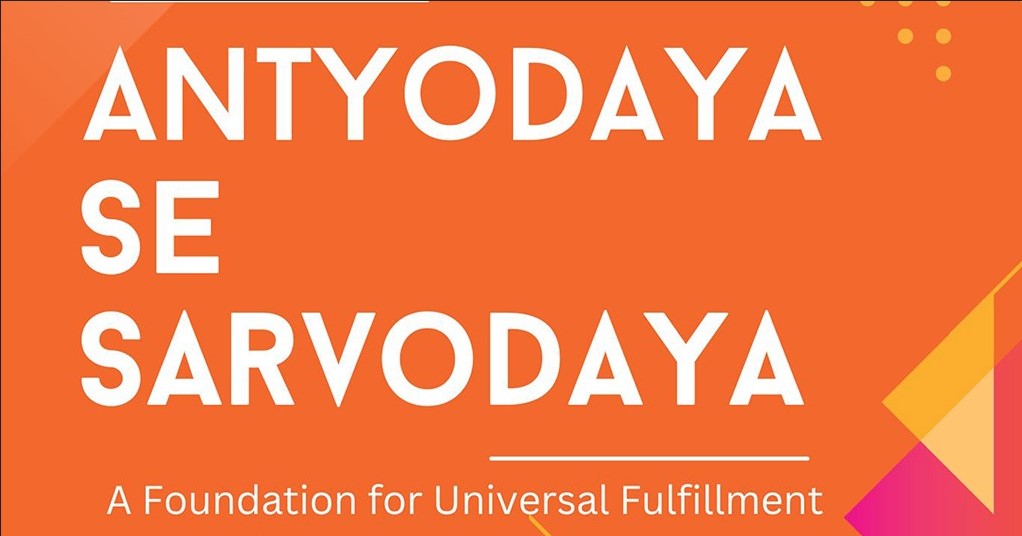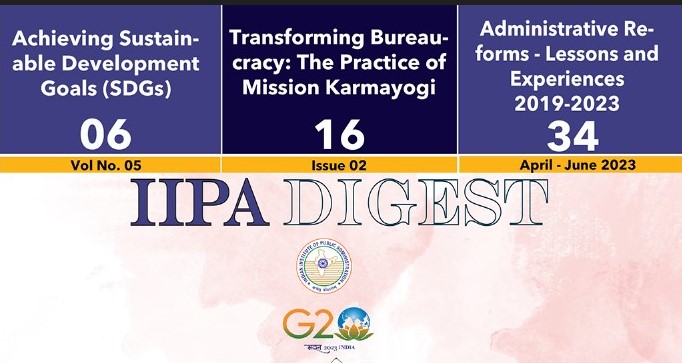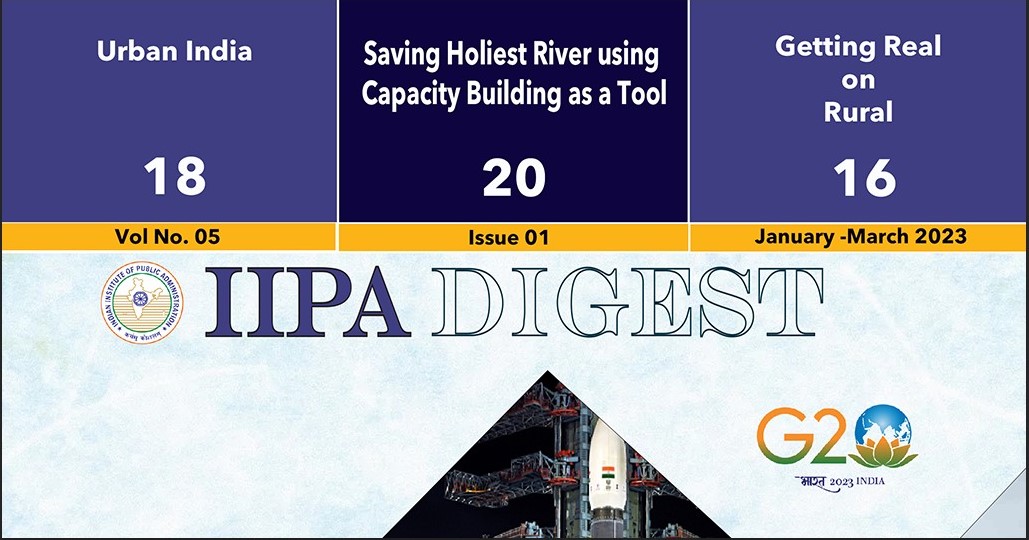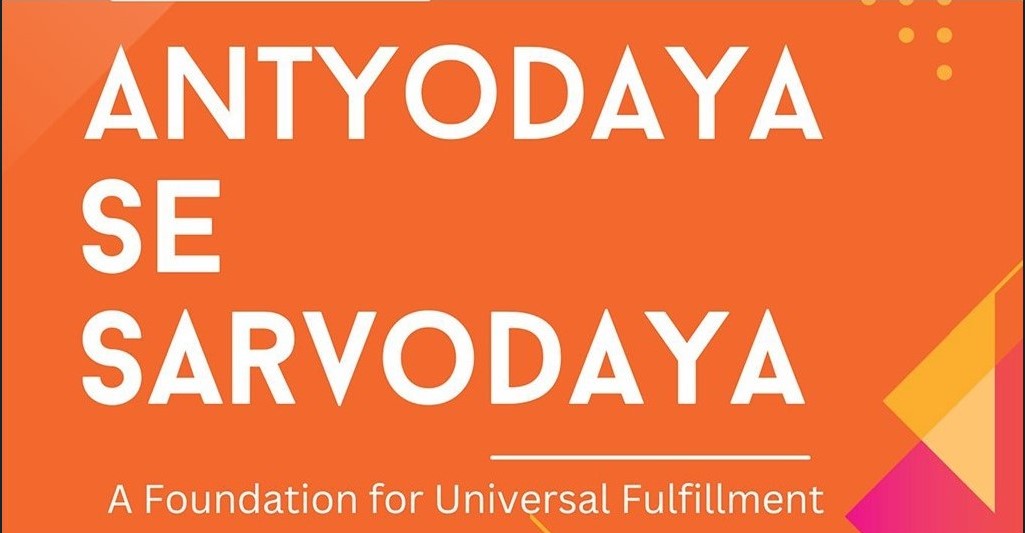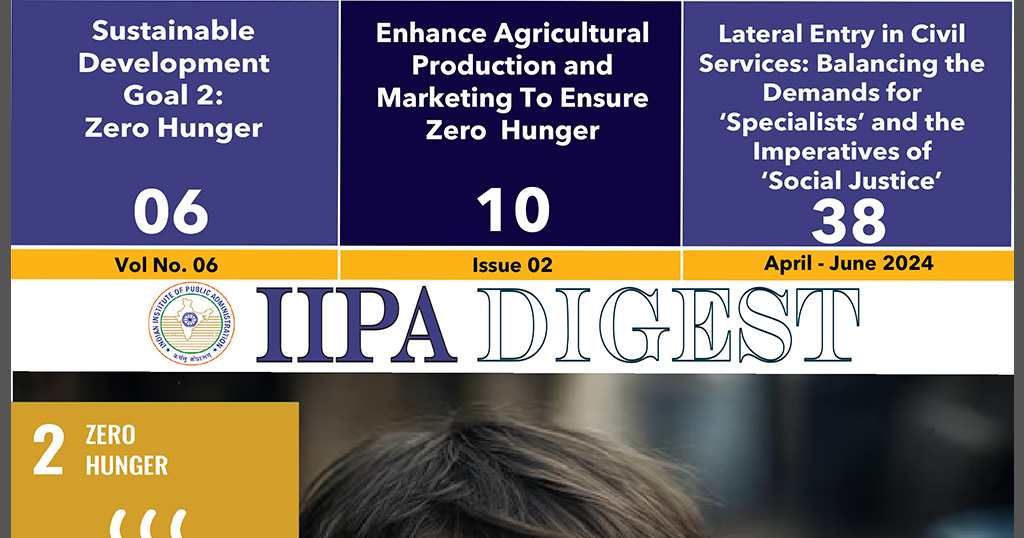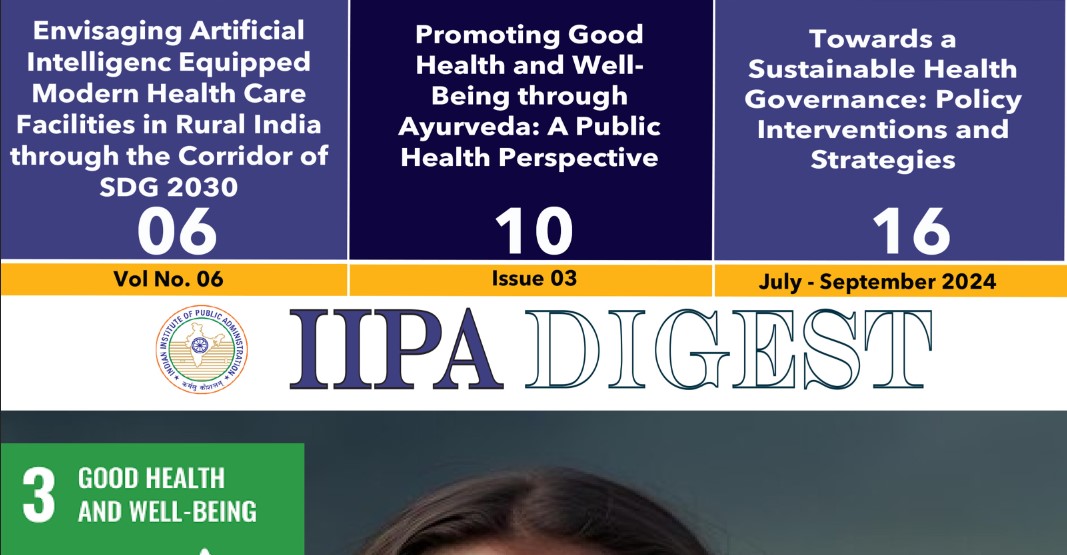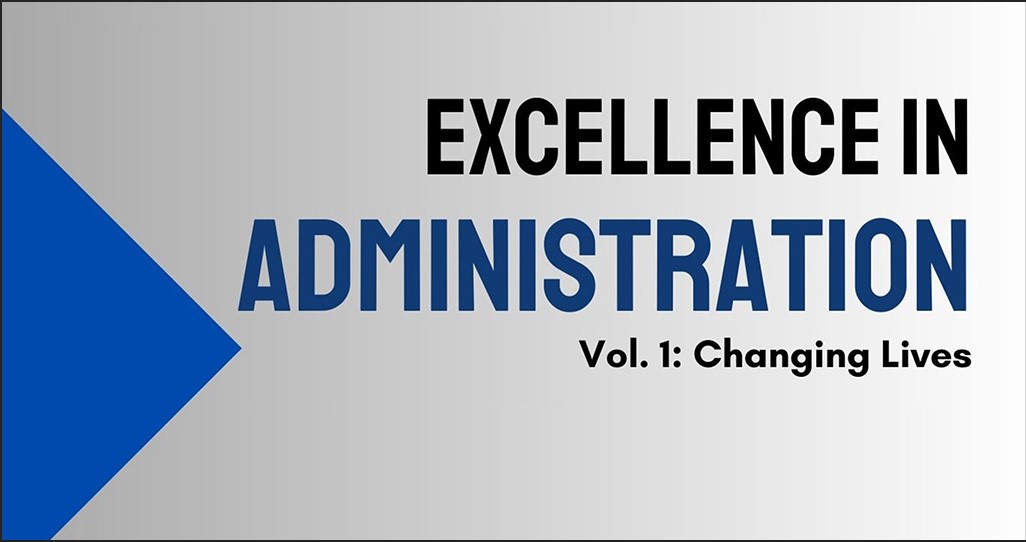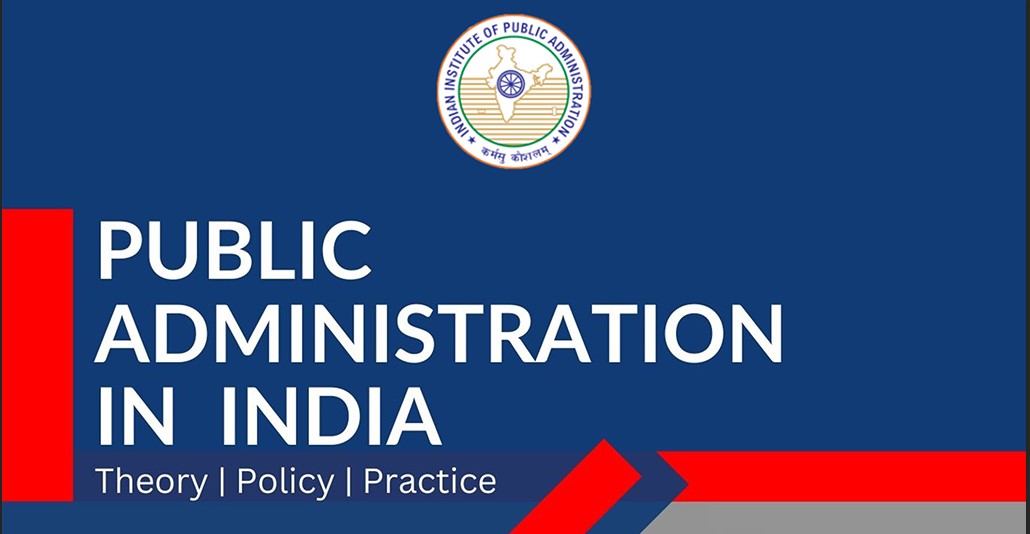Digital Innovations in Social Protection
Abstract
Digital Innovations in Social Protection: Trends,
Challenges, and Solutions: The integration of digital technologies into social protection
systems represents a transformative shift with profound implications for the delivery
of welfare services. This chapter explores the evolving landscape of digital innovations
in social protection, contextualising these developments within the broader framework
of universal social protection and a systemic approach to welfare. The chapter begins
by outlining the historical and conceptual foundations of social protection, emphasising
the importance of achieving universal coverage to safeguard vulnerable populations
against various socio-economic risks. In examining the current trends, the chapter
highlights the emergence of DPI-enabled (Digital Public Infrastructure) systems
as pivotal tools in enhancing the efficiency, accessibility, and inclusivity of
social protection programmes in India. By leveraging technologies such as biometric
identification, mobile platforms, and data analytics, these innovations aim to streamline
service delivery and expand reach, particularly in underserved and rural areas.
The discussion extends to a gendered perspective on social protection, assessing
how digital innovations can address or exacerbate gender disparities in access and
benefits. Additionally, the chapter adopts a social development approach to social
protection, exploring how digital innovations intersect with broader goals of human
development and social equity. The effects of digitalisation on vulnerable populations,
including marginalised communities and individuals with limited digital access,
are examined to understand potential risks and opportunities.
Introduction
Social protection is increasing on a global scale.
There is ample evidence that it not only protects households from falling into poverty
trap, due to ups and downs in life, but safeguards the way to more prosperity by
offering an alternative to negative coping strategies, such as taking children out
of school or selling household assets (Radermacher, 2021). It boosts regional demand, which aids in the growth
of regional economies. Households are more resilient to the financial implications
of pandemics, climate shocks, and other crises. Additionally, it reduces inequalities,
strengthens social cohesions and promotes stability and peace. Social protection is a key instrument for achieving the Sustainable Development
Goals (SDGs). In reality, providing everyone with access to social assistance when
they are in need is an intrinsic goal of the SDGs. But building a resilient social
protection systems is not an easy task. Selecting the right mix of instruments,
tailoring them to the desired objectives and target groups, coordinating them as
effectively as possible, capitalizing on the potential of digitalisation for social
protection delivery, and responding to the challenges posed, for example, by new
forms of work, all necessitate a thorough understanding of the underlying concepts
of social protection and their practical application.
The advent of digital technology has brought about a
transformation in the welfare systems of several countries. The gradual digitization
of welfare policy, planning, and implementation has transformed welfare dynamics
around the world (Larasati et.al., 2023). It has improved
welfare delivery by making it more efficient and targeted to eligible beneficiaries,
increasing the advantages of welfare policy for the most vulnerable sections of
the society. The
G20 Leaders' Declaration in Rome (2021) reinforced the importance of enhanced social
protection through a 'human-centric' approach. Technology can play an important
role in ensuring effective welfare services in line with the United Nations' Sustainable
Development Goals (Ghosh, 2023).
Social Protection Concepts and Approaches
Social protection, defined as a "system of policies
and programs that provide equitable access to all people and protect them throughout
their lives against poverty and risks to their livelihoods and well-being"
(USP 2030 2019), can take the form of benefits and services ranging from contributory
schemes to cash or in-kind benefits, active labour market programmes to improve
skills and access to jobs, and social services for vulnerable populations. Social
protection is valued not only for its potential to reduce poverty and promote social
inclusion, but also for its ability to help achieve complementary goals. It is regarded
as a critical component of human development (by enhancing nutrition, education,
and health), productive inclusion (by growing human capital and productive assets),
and economic growth (via better risk management and inequality reduction).
The Sustainable Development Goals (SDGs) of the UN include
social protection as one of their main priorities, reflecting its evolution. Target
1.3 sets the goal of “implementing nationally appropriate social protection systems
and measures for all, including floors, and by 2030 achieving substantial coverage
of the poor and the vulnerable. Several countries have achieved tremendous progress
in increasing access to social protection benefits and services during the last
decade. Still, the vast majority of the world's population lacks access to social
safety. According to the World Bank's ASPIRE database, in 2018, just 44 per
cent of the global population received social protection assistance. When it comes
to access to comprehensive social security, the situation is even worse: only 29
per cent of the global population has access to it, while 71 per cent does not (ILO
2019). Hence, it is important to intensify efforts at the national and global levels
to achieve the SDG target by 2030. It is estimated that at the present pace of progress,
SDG 1.3 will be achieved in 2084, while fragile states have to wait until 2259 (Gentilini
2019).
Towards Universal Social Protection
The World Bank defines universality in social protection
as two elements: 'everyone' is 'covered' (Gentilini et al., 2019a). While 'everyone'
refers to protection for all members of society (not just some), 'universal coverage'
does not always imply that every person will get a payout in a given period or equally
from each individual part of the package.
This is due to the fact that social insurance coverage
is risk-based, whereas non-contributory assistance is tied to the 'receipt' of transfers.
In other words, one is covered by social assistance when an actual transfer is received;
instead, coverage in social insurance terms does not entail an actual receipt of
benefits insurance will be available if, when, and where needed by all citizens,
and even all residents (Packard et al, 2019). This dual concept of coverage distinguishes
universality in social security from universality in health care, which is entirely
risk-based (Gentilini 2018).
People's demands are always changing, therefore families'
and individuals' paths toward social protection fluctuate over time based on social,
demographic, political, and even environmental factors. For example, income support
or disability insurance may be needed throughout life, whereas child development
services and old age pensions may only be needed at specific points in the life
cycle. People may decide not to use all of the benefits and services they are entitled
to, or they may decide not to use them at all during a specific time frame (Packard
et al., 2019). This means that rather than depending on a single tool, like universal
basic income, to accomplish several goals, a portfolio of programs catered to distinct
needs and risks is needed (Gentilini et al., 2019b).
Systemic Approaches to Social Protection
Effective and comprehensive social protection relies
heavily on a systems-oriented approach that improves coordination and integration
at the policy, program, and delivery levels (World Bank 2012). "Integrated
systems" are defined as those that, with a focus on the most vulnerable members
of the population, providing a sufficient mix of benefits and services to address
the major risks that they confront.
Minimum requirements for an effective social protection
system (IPCG) 2019) are
as follows:
Inclusiveness: Everyone is protected throughout their
life; this includes guaranteeing gender equality, non-discrimination, accessibility
to social protection programs and benefits, and program designs that address the
unique needs of individuals with various traits, situations, and vulnerabilities.
Eliminating coverage gaps will guarantee that the most vulnerable and impoverished
segments of society are included.
·
Adequacy: The system offers regular
and predictable benefits as well as high-quality services that meet the population's
social protection needs while also achieving national objectives.
·
Sustainability: Financial resources
are allocated in accordance with actual and expected outcomes, demographic patterns,
and economic development.
·
Coherence: Social, economic, and sectoral
policies are consistent both internally and externally.
·
Responsiveness or dynamism: To evolve
and adapt to changing social, demographic, environmental and political needs.
A Gendered Approach to Social Protection
Sustainable Development Goal 1.3 calls for governments
to 'implement nationally appropriate social protection systems and measures for
all'. In 2019, United Nations Member States agreed at the 63rd Commission on the
Status of Women to 'work towards establishing or strengthening inclusive and gender-responsive
social protection systems, including floors, to ensure full access to social protection
for all without discrimination of any kind' (UN Women, 2019). As part of the Santiago
Commitment, Member States of the Economic Commission for Latin America and the Caribbean
agreed in 2020 to 'design comprehensive care systems from a gender, intersectional,
intercultural, and human rights perspective that foster co-responsibility between
men and women, the State, the market, families, and the community as part of social
protection systems' (United Nations, 2020). The COVID-19 pandemic has significantly
impacted women's employment, caregiving obligations, access to services, and mental
health. As a result, there has been an unprecedented amount of support for developing
a national social safety system that takes gender equality into account. These calls
emanate in spite of the remarkable pandemic-response investments in social assistance
mechanisms (mostly cash transfers) made by governments around the world, including
those that account for gender inequalities (UNDP and UN Women, 2021).
Normative Approaches to Social Protection
The social development approach provides a useful
‘normative framework’ for analysis of social protection in the global South and
its connection to formal and informal systems of social provision. Within the larger social development view, which
recognises the plurality of players involved in the delivery of social protection
and welfare systems, there has been a paradigm shift toward state-centered social
protection during the last two decades (Patel and Midgley 2024). These normative
approaches include: the safety net approach, the risk-management approach, the enterprise
approach, and the statist, rights-based approach. This section discusses each approach
in turn.
Social Safety Net Approach
A safety net approach expresses to the idea that
social protection assistance should be provided to people and families whose income
falls below a defined minimum as determined by a means test. As the term implies,
these programs provide a safety net to prevents persons in financial need from becoming
destitute. In addition to social assistance, terminology such as selective, residual,
and targeted schemes are also used to connote this methodology.
The World Bank has actively advocated the safety
net strategy through its financing policies,
since governments in the global South began to implement or expand existing
poverty-reduction schemes. In addition, many governments have implemented conditional
cash transfers (Leisering, 2019), particularly in Latin America (Barrientos, 2019),
but to a lesser extent in other developing nations, including Africa. They often
give small cash rewards to families with children who attend school, are immunised,
and receive regular health checks. Categorical pensions and child allowances now
exist throughout the developing countries.
According to the International Labour Organization
(ILO) (2021), millions of families worldwide currently benefit from some form of
social assistance. The safety net approach has been criticized for stigmatizing
its recipients and imposing onerous procedures, resulting in many people who qualify
for social assistance fail to apply. According to the World Bank (2018), up to 80
per cent of those eligible for social assistance in the poorest developing countries
do not claim benefits. Another issue is that means tests are often inaccurate, resulting
in 'targeting errors', in which social assistance applicants in many developing
countries are either erroneously denied benefits or included.
However, proponents of the safety net approach often
articulate that costs can be reduced significantly
by targeting benefits to those in need. There is no point in paying benefits to
financially affluent families who do not require them. Despite these debates, there
is compelling evidence that social assistance has reduced poverty in the global
South. According to Midgley (2022), it has increased poor people's incomes and improved
their living conditions. He adds that it has reduced inequality in nations such
as Brazil, South Asia, and Africa. Social safety net can be used effectively in
conjunction with other types of social security to broaden coverage and meet people's
income needs in developing countries.
Risk management approach
The risk management approach is founded on the belief
that individuals and families should be prepared to meet the risks that endanger
to their well-being. This viewpoint holds that people should engage in statutory
social insurance schemes offered by their employers. These schemes protect income
against the risks, or contingencies, that cause wages to be reduced, interrupted,
or terminated due to illness, unemployment, retirement, and other adversities. Supporters
of the risk management method argue that people should save enough money to deal
with financial difficulties.
Farmers and artisans organized mutual aid associations
and communal funds, which served as the foundation for the risk management strategy.
In addition to assisting each other in times of difficulty, workers paid regular
contributions into these funds, which then provide benefits if they became ill or
were injured or killed at work. The ILO, the International Social Security Association,
and many scholars who support the rapid expansion of social insurance over the last
century advocate for risk management through social insurance, such as health and
unemployment.
However, throughout the 1990s, the World Bank repeatedly
criticized government in risk management, urging individuals and families to take
greater responsibility for risk response. A special focus was on estimating retirement
income needs. Holzmann and Hinz (2005), two World Bank officials, systematically
explained the risk-management approach by promoting increased market participation
in addressing retirement income needs. Their vision of the market, which found expression
in the enterprise model, has had a significant impact.
The risk-management approach's reliance on contributions
made through regular wage payment has drawn a lot of criticism. According to ILO
(2018) estimates, that more than 61 per cent of the world’s employed population
are in informal employment, mostly concentrated in emerging and developing countries,
with 58 per cent of them being women. The proportion of workers in regular wage
employment in the global South is comparatively small, with the result that few
participate and benefit from these schemes.
The ILO (2019, 2021) has devoted specific attention
to this issue, and several proposals have been made to expand coverage. However,
much more work is needed to improve access to social security in the global South.
If workers in developing nations are to manage risks, social insurance coverage
needs must be expanded to include a large number of them.
The Enterprise Approach
According to the enterprise approach, social protection
should be the responsibility of commercial enterprises rather than the government.
Commercial enterprises are claimed to be effective, consumer-responsive, and well-positioned
to carry out social protection policies and programs because they operate on financial
markets and are guided by economic principles that emphasize the benefits of the
pricing mechanism in meeting needs. The enterprise approach is also praised for
encouraging innovation, choice, accountability, and what Midgley (2017) refers to
as "welfare consumerism." Advocates of the enterprise approach argue that
people in financial need should buy social protection products from the market,
just like consumers shop for goods and services. Additionally, they contend that
it is time to stop depending on governments to offer social protection. Allowing
commercial enterprises to compete on the market will also result in lower costs
and higher-quality services.
The enterprise approach has been severely criticized.
One of the most serious concerns, is that efforts to increase human welfare should
not be subjected to market principles that disregard the relevance of moral values
such as altruism and compassion, and that reduce social relations to economic transactions.
The claim that commercial enterprises are more efficient than governments has also
been refuted. As Midgley (2017) summarizes, research has revealed that these enterprises
are not always competent and efficient, and that issues such as mismanagement, price
fixing, and corruption have restricted their efficacy.
The statist, rights-based approach
The statist, rights-based approach views social protection
as a fundamental human right for all individuals. It is rooted in the ancient idea
that all human beings have intrinsic civil and political rights guaranteed by the
government. The claim that they have a right to social protection is more recent,
stemming from nineteenth-century initiatives by social reformers to combat poverty
and social neglect. These ideas called for governments to gradually become more
involved in expanding social protection meaures. It also led to the establishment
of the ILO in 1919, which has since championed the right to social protection and
facilitated the approval of multiple international treaties that obligate national
governments to extend statutory social protection to their citizens.
Supporters of the other normative approaches to social
protection as discussed above reject the notion that the government should be responsible
of social protection and that it should be provided as a right of citizenship. Instead
of spending huge amounts funds to cover the entire population, they argue that the
government should target social protection on the most vulnerable sections in society.
To minimize costs and enhance efficiency, they argue that governments should limit
their own involvement by outsourcing to commercial and non-profit organizations
while encouraging greater personal accountability. Many community activists are
also skeptical of many governments' 'top-down' approach to social protection, and
they advocate for greater local participation in developing and implementing systems
that meet their specific needs. Hopgood (2013) highlights that several governments,
representatives of international organizations, and scholars simply assert that
human rights play an indispensable role in social protection, failing to acknowledge
the pervasive violations of these rights. To ensure that the right to social protection
is realized, a great deal of work needs to be done.
Social Development Approaches in Social Protection
The social development approach to social welfare
emerged in the global South in the 1980s and 1990s as an alternative to colonial
and post-colonial governments' remedial and residual welfare approaches (Midgley
2017; Patel 2015). It was motivated by the need for new theoretical and intervention
(practice) modalities to address a wide range of social problems impacting children,
families, and other vulnerable people, as well as social issues such as mass poverty,
underdevelopment, and inequality.
Social development ideas in the welfare field were
also boosted by international commitments to human rights such as the right to social
security, anchored in the United Nations Universal Declaration of Human Rights of
1948, and the right to development, rooted in the United Nations Declaration on
the Right to Development of 1986, Article 1 of which upholds a person's right "to
participate in, contribute to, and enjoy the benefits of economic, social, cultural
and political This proposes a call for a comprehensive or multidimensional approach
to promoting human well-being that goes beyond the narrow focus on income or material
well-being associated with the enterprise approach.
A decade later, in 1995, the United Nations adopted
the Copenhagen Declaration on Social development which recognised the importance
of social rights as well as the link between social and economic growth. Constitutional
commitments to social protection are, however, guaranteed not only in democracies,
but also in different political systems in the global South.
The exponential rise of social security measures,
particularly cash transfers, in these countries resulted in a substantial shift
beginning in the late 1990s. This phenomenon has been defined as a quiet revolution,
an unusual concept that has gained traction in the global South (Leisering 2019,
4). It has, however, reshaped welfare and social development ideas and policies,
elevating poverty reduction to the political and social agendas of these countries
and the world. Poverty eradication (SDG Goal
1) is critical to attaining the UN 2030 Agenda for Sustainable Development and connects
with other SDGs, such as zero hunger (SDG 2), good health and well-being (SDG 3),
gender equality (SDG 5), and inequality reduction (SDG 10). SDG 1.3 promotes social
protection as a key strategy for reducing and preventing poverty throughout the
life cycle, as well as social protection systems that foster social inclusion.
In a nutshell, social protection strategies are multifaceted
and aim to address diverse needs and vulnerabilities within societies. Universal
social protection highlights the ambition of creating inclusive systems that guarantee
coverage for everyone, ensuring equitable access to support. Systemic approaches
to social protection advocate for comprehensive frameworks that integrate various
programs to effectively manage and mitigate risks. A gendered approach to social
protection focuses on addressing specific needs and challenges faced by different
genders, aiming for equality and fairness in support mechanisms. Normative approaches
to social protection incorporate a range of perspectives: safety nets provide immediate
relief in times of need; risk management aims to anticipate and address potential
threats; the enterprise approach focuses on empowering individuals through economic
opportunities; and the statist and rights-based approach emphasizes the role of
the state in guaranteeing rights and providing support as a matter of justice and
legal obligation. Finally, social development approaches in underscore the importance
of integrating social protection with broader development goals to foster resilience,
promote economic growth, and enhance overall well-being.
The next section analyses the social protection landscape
in India, with a focus on moving toward a DPI-enabled social protection delivery
system. It examines the effects of digitalisation on vulnerable groups, focusing
on how technological improvements affect accessibility and equity in social protection
systems.
Social Protection Landscape in India
The Indian government provides a wide range of social
welfare programs, known as social protection or social security programs, to protect
against economic and social distress. The World Bank (2019) divides these programmes
into three categories:
a. Promotional, which invest in the ability of families
to survive shocks on their own by enhancing productivity, access to job opportunities,
and incomes. The Mahatma Gandhi National Rural Employment Guarantee Act (MGNREGA),
an Indian labour law and social security measure that aims to guarantee the ‘right
to work’ is one such initiative.
b. Preventive, which aim to reduce the impacts of
shocks before they occur. These are mainly social insurance programmes.
c. Protective, mitigating the impact of shocks after
they have occurred. These programmes are typically anti-poverty measures, as they
provide social assistance to the poor through cash or kind.
India's social protection architecture has three
tiers of government, in line with the country's federal structure, which classifies
areas of governance into central, state, and concurrent. Key areas of social protection,
including as public health and sanitation, education, and labor welfare, are either
exclusively state-run or shared by both state and federal governments (Srivastava,
2020). Welfare programs for these areas are usually designed as centrally sponsored
schemes, in which the central government's role is limited to disbursing funds to
state governments, that are the implementing bodies. Social security programs are
designed and delivered by governments below the federal level, which might differ
in coverage, benefits, and implementation processes among states and localities.
Labour market dynamics complicates India's social
protection landscape. According to the 2021-22 Periodic Labour Force Survey (PLFS),
71.8 per cent of India's workforce is employed in the non-agricultural informal
sector, while 38.6 per cent of regular-wage and salaried employees work in an informal
setting.
The informal sector accounts for more than half of
the Indian economy's gross value added (GVA), with the agricultural, construction,
and real estate sectors making the greatest contributions. Informal employment can
exist both in the formal and informal sectors. The majority of informal employment
is in unincorporated and household enterprises, with only around 8 per cent in formal
enterprises. These are sticky data points. Informality in the Indian labour market
has marginally declined in the last two decades. This has clear ramifications for
the country's social protection system. On average, informal workers earn lower
wages than those who work in the formal sector. As a result, they are more likely
to be poor and subject to income and price shocks, as well as health-care costs.
At the same time, they lack social protection and credit, and their education levels
are likely to be lower. The COVID-19 pandemic, which drove informal laborers deeper
into poverty, exposed the group's vulnerability.
Towards A DPI-enabled Social Protection Delivery System
The success of the 1990s information technology revolution
has resulted in digital technologies serving as transformative tools for governance
and development (Sivaramakrishnan and Pellissery, 2023: 471). Like other countries
throughout the world, the Indian government quickly used this infrastructure to
modernize its social protection programs. The COVID-19 pandemic served as a testing
ground for India's digital relief transfers. In fact, 800 million farmers received
food grains through digital platform, and 87 million farmers received three installments
of INR 2000 (USD 25) in cash transfers, 200 million women benefitted from a cash
transfer of INR 1500 (USD 18.7), and 30 million poor senior citizens benefitted
from an ex-gratia payment of INR 1000 (USD 12.5).
India's digital infrastructure demonstrated remarkable
agility and scalability throughout the pandemic, despite facing significant criticism.
According to Drèze et al., (2017) describe the digital revolution as "pain
without gain." Information gaps, biometric identification failures, connectivity
issues, processing delays, enrollment issues, cash withdrawal issues, digital illiteracy,
and poor grievance resolution mechanisms resulted in new types of exclusions.
India was early to implement digital systems for
delivering social protection. Its three main pillars were an integrated banking
system (Jan Dhan), a system of unique identification numbers (Aadhaar), and mobile
communication, known as the JAM trinity, an acronym for the three initiatives.
JAM was effectively operationalized through two large-scale
programs launched between 2009 and 2014. In 2009, the country launched a nationwide
programme to provide each citizen with biometric-based unique identification numbers,
reaching 95 per cent of the population (MOF 2009-10); and in 2014, it launched a
massive financial inclusion programme, bringing 80% of the population into the formal
banking system (MOF 2014-15). The telecommunications revolution of the early 2000s
reinforced the integrated infrastructure, while its benefits have yet to be realized.
The nature and functions of each of these pillars,
as well as the potential of the digital infrastructure, are briefly examined in
this section. This establishes the framework for evaluating the results of the digital
intervention critically.
Unique Identification Number
Aadhaar is a 12-digit unique identification (UID)
number generated for all Indian residents. Aadhaar was intended to give residents
with access to resources and benefits to which they are entitled (Anand 2021). The
establishment of the UID number was the first step toward reducing the scope of
corruption and leakages (such as payments to ghost beneficiaries) in welfare distribution.
The term 'UID' was first used in 2010 in a document by Ministry of Finance.
Previously, India maintained databases with different
agencies, as well as political and administrative people in charge of the transfers.
This human intervention proved highly problematic since it created several potentials
for impersonation, duplication, and fraud. In contrast, the UID creates a central
database of all residents as well as a legal identification for each citizen, providing
more effective targeted services and benefits. Aadhaar also ensures convenience
in welfare programmes and reduces transaction costs for the poor.
The UID was thus adopted with the expectation that
it would improve service delivery, accountability, and transparency in social sector
activities, as well as lead to financial inclusion.
Financial Inclusion
The second pillar is Jan Dhan, a financial inclusion
programme launched by the government in 2014 with the aim of 'banking the unbanked'.
It contributed to improve bank account penetration from 56 per cent in 2014 to 80
per cent in 2018 (Sanghera 2018). Jan Dhan is integrated with JAM by the use of
an alpha numeric code, the Indian Financial System Code, which allows for online
transfers of funds into Aadhaar-linked accounts. JAM operates through a national
network of post offices, each of which serves as a point of verification for beneficiaries
using Aadhaar-enabled remote services. Government officials at post offices confirm
UID codes in the Aadhaar beneficiary database. The validation allows the government
to make payments to beneficiaries via financial institutions (such as micro automated
teller machines, post offices, banks, and banking correspondents) that are linked
to the Aadhaar payment bridge (Gelb and Mukherjee 2019). The sharp rise in bank
account numbers presents more potential to identify and provide financial resources
to the underprivileged, hence enhancing serviceability.
Mobile Communications
The third pillar, which is mobile communication,
has several functions. It serves as a conduit for last-mile financial delivery and
creates a connection between the people and their government. With the rapid spread
of mobile ownership throughout the rural belt, it is considered a feasible choice
for last-mile connectivity as well as government communication. India had 1.16 billion
cell phone customers as of 2021, with 0.52 billion of those users coming from the
rural belt. This number is significantly higher than the 20.19 million wireline
users, 1.71 million of whom are located in rural areas (TRAI, 2021).
While there is no reliable statistics on individual
cell phone subscribers, India intended to achieve a 65 per cent penetration rate
by 2022 (DOT 2018). Broadband subscribers in India currently number 742 million,
allowing them to access government services from the comfort of their own home.
By linking Aadhaar registrations to cellphone numbers, the long-feared operational
bottlenecks were avoided.
Digital infrastructure is based on information and
communication technologies. This facilitates information exchange and communication
among government line departments and allows services to be distributed through
commission-based facilities known as common service centers (CSCs). In addition
to essential public utility services, CSCs provide business to customer services,
social welfare programs, healthcare, banking, education, and agricultural services
to residents living in remote and rural areas. All of the channels are steadily
becoming more digitalized, which suggests that people believe technology is the
only practical solution to the system's numerous problems.
The JAM trinity offered serviceability, accountability,
and transparency in response to the system's inefficiencies. Aadhaar aims to address
inefficiency in service delivery by eliminating fraud and other systemic inefficiencies
via online authentication. Jan Dhan promised more access, while mobile communications
promised government-citizen interactions to reinforce JAM's core principles. The
JAM trinity also pledged to increased accountability and transparency by improving
monitoring of the various pillars and implementation processes (UIDAI, 2021).
Effects of Digitalisation on Vulnerable Populations
The JAM trinity is based on a number of assumptions
that have varying effects on different social groups. This includes the assumptions
of mobile phone ownership, banking service accessibility, network connectivity,
and freedom of movement. People with disabilities, the elderly, and women are all
impacted differently by access to digital infrastructure.
Women constitute a major beneficiary group in India's
social protection and welfare systems. Women constitute 60 per cent of National
Social Assistance Programme participants (about 25 million people), with 80 per
cent of payments paid directly to bank or post office accounts. The balance is paid
either through cash or by money order. Harnessing digital benefit transfers is usually
perceived as increasing women's agency and democratic participation. It is believed
to offer women with the necessary privacy and autonomy over money spent, saved,
or invested, while providing a convenient and secure delivery option (O'Donnell
et al., 2021).
However, not every woman has access to a bank account
or mobile money. It is believed that technology is the key to facilitating direct,
unmediated communication between the people and the government. Because the welfare
distribution system is deeply ingrained and prioritizes family welfare above individual
welfare, it ignores the ways in which social security programs affect different
genders.
An example from the southern state of Tamil Nadu
illustrates how women are impacted by the digital divide. Low literacy and lack
of ownership of phones rendered women less empowered than previously in the manual
system (Sonne 2020). Another study conducted in the central zone of Madhya Pradesh
indicated that women with cellphones did not know how to operate it (Aneja and Mishra
2017).
Only 30 per cent of India's 143 million senior citizens
receive pensions, while only 6 per cent of the 15 million disabled people do the
same. While pension system coverage is low among the elderly and people with disabilities,
new issues have evolved that did not exist during the manual transfer of benefits.
The issues include unreliability of business correspondents, fingerprint mismatches,
and exclusion due to limited mobility.
The digitizing scheme entailed disbursing cash directly
to the beneficiary's door step through money orders and business correspondents.
However, a study conducted by Aadil et al., (2019) in the south Indian state of
Andhra Pradesh revealed that 84 per cent of respondents considered business correspondents
to be unreliable and preferred the earlier panchayat-based cash distribution system.
Moreover, non-profitability and low commission rates for business correspondents
have been identified as key factors contributing to the unsatisfactory delivery
experience.
Conclusion
In conclusion, the diverse concepts and approaches
to social protection—ranging from universal coverage and systemic integration to
gender-sensitive and normative frameworks—are crucial for understanding and shaping
the social protection landscape in India. As India navigates its unique socio-economic
challenges, these approaches provide essential tools and principles to address disparities
and vulnerabilities, ensuring that social protection systems are comprehensive,
inclusive, and aligned with both global standards and local needs. By integrating
these varied strategies, India can enhance its efforts towards creating a robust
and equitable social protection framework that effectively supports its diverse
population and promotes sustainable development.
India's social protection coverage is much lower compared to several other nations. Nonetheless, this is one of the largest social programmes in the world due to its enormous scale and the total number of beneficiaries. India has made significant progress from its paper-based welfare delivery system, which was plagued by inefficiencies, bureaucratic corruption, and delays. During the COVID-19 pandemic, many social protection initiatives for various groups were implemented, putting the digital infrastructure to the test. The digital system still has several loopholes, but it has made some notable achievements that ought to be recognized. The percentage of people with bank accounts has more than doubled, from 35 per cent in 2011 to 80 per cent in 2021, higher than the global average of 76 per cent. This effort reduced the gender gap in account ownership, from 22 per cent account ownership among women in 2011 to 76.6 per cent in 2017. This illustrates the potential reach and capacity of government programs to foster financial independence and economic empowerment for poor women. India has emerged as a leader in the invention of biometric digital identity systems, with a 95 per cent penetration rate within a decade (Gelb and Mukherjee, 2019). This has allowed the national and state governments to reduce leakages to non-eligible beneficiaries by making direct payments to recipients through the government’s flagship programmes and minimizing the delays in payment.
References
1.
Anand, Utkarsh. “4–1 Verdict:
Supreme Court dismisses pleas seeking Aadhaar ruling review”, Hindustan Times,
21 January 2021.
2.
https:// www.hindustantimes .com/India-news/
41 -verdict -supreme -court -dismisses -pleas -seeking -aadhaar -ruling -review
-101611189869910.html. July 15, 2024.
3.
Barrientos, “Armando” Conditional income transfers,
social policy and development.” Handbook of Social Policy and Development.
James. Midgley, Rebecca Surender and Laura Alfers. Ed. Cheltenham, UK and Northampton,
MA, USA: Edward Elgar Publishing: USA.373–92. Print.
4.
Bordolai, Mridusmita, Farooqui,
Mohammad Hama, & Pandey. “Sharad. Social Security for informal workers in India.”
New Delhi: Centre for Policy Research, 2021.
5.
https://cprindia.org/wp-content/uploads/2021/12/Brief_SocialSecurity_InformalWorkers_21Nov2020.pdf, accessed on July 12,2024.
6.
DOT (Department of Technology).
“National digital communications policy”, Government of India, 2018. https:// dot
.gov .in/ sites/ default/ files/ EnglishPolicy -NDCP .pdf. July 15,2024.
7.
Drèze, Jean, Khalid Nazar, Reetika
Khera and Anmol Somanchi. (2017). “Aadhaar and food security in Jharkhand: Pain
without gain?.” Economic and Political Weekly, 52 (2017): 50–59. Print.
8.
Foley, Michael, “Schemes to Systems
- Rebalancing Social Protection in India”. The World Bank. 2019.
9.
https://www.worldbank.org/en/news/feature/2019/11/20/schemes-to-systems-future-social-protection-india. 28 July, 2024.
10.
Gentilini, Ugo, “By When Would
Universal Social Protection Be Achieved?”. Blog post, January 17. Let’s Talk Development,
World Bank. 2019.
11.
https://blogs.worldbank.org/developmenttalk/when-would-universal-social-protection-be-achieved. 25, July 2024.
12.
Gentilini, Ugo., Sara Laughton,
and Clare O’Brien. “Lessons on Better Connecting Humanitarian Assistance and Social
Protection.” Social Protection and Labor Discussion Paper 1802. World Bank, Washington,
DC. 2018. http://documents.worldbank.org/curated/en/94640154 2689917993/pdf/Human-itarian-Capital-Lessons-on-Better-Connecting-Humanitarian
-Assistance-and-Social-Protection.pdf. July
2,2024.
13.
Ghosh, Ambar, “Technology as
conduit of social protection: Lessons from India”., T20 Policy Brief, June 2023.
https://t20ind.org/research/technology-as-conduit-of-social-protection/. July 25,2024.
14.
Hopgood, Stephen. The Endtimes
of Human Rights, Ithaca, NY: Cornell University Press, 2013. Print.
15.
Gelb, Alan and Anit Mukherjee.
“Building on digital ID for inclusive series: Lessons from India”, Centre for Global
Development, 2019. https:// www .cgdev .org/ publication/building -digital -id -inclusive
-services -lessons -India. July 28, 2024.
16.Mohapatra Gadadhara • 5 months ago
Leave a comment
More articles from Governance & Polity
